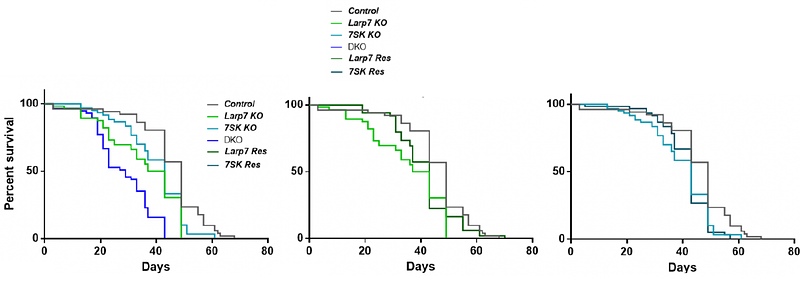Tissue specific function of the Drosophila 7SK snRNP in controlling motoneuron synaptic growth

Tissue specific function of the Drosophila 7SK snRNP in controlling motoneuron synaptic growth
Mohana, G.; Kreim, N.; Roignant, J.-Y.
AbstractThe 7SK snRNP is a ribonucleoprotein complex comprising the non-coding RNA 7SK and the associated proteins MePCE, LARP7, and HEXIM. It regulates transcription in higher eukaryotes by sequestering the positive transcription elongation factor (P-TEFb), preventing premature entry of RNA Polymerase II in elongation. Loss of LARP7 in humans causes the Alazami syndrome, marked by restricted growth, impaired movement, and intellectual disability, though the underlying mechanisms remain unclear. In this study, we show that loss of Larp7 or 7SK RNA in Drosophila is viable but impairs locomotion and reduces axonal growth at neuromuscular junctions. Larp7 is enriched in specific motoneurons, where it functions autonomously to promote axogenesis. Reducing P-TEFb abundance partially rescues the locomotion and axonal growth defects, indicating that the 7SK complex mediates this function via transcriptional regulation. Transcriptomic analysis of mutant motoneurons revealed that the 7SK complex primarily regulates long genes with high GC content at their promoters. These findings provide new insights into the tissue-specific roles of the 7SK snRNP in transcription and organismal function.